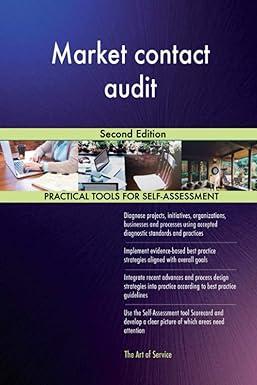Answered step by step
Verified Expert Solution
Question
1 Approved Answer
Please kindly help me with the solution to this problem Thanks NORTHERN FRONTIER PARK Assume you are an audit senior employed by an international public

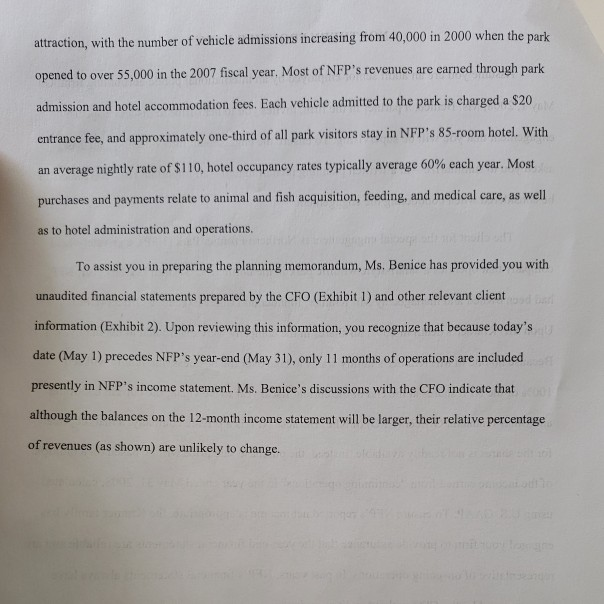
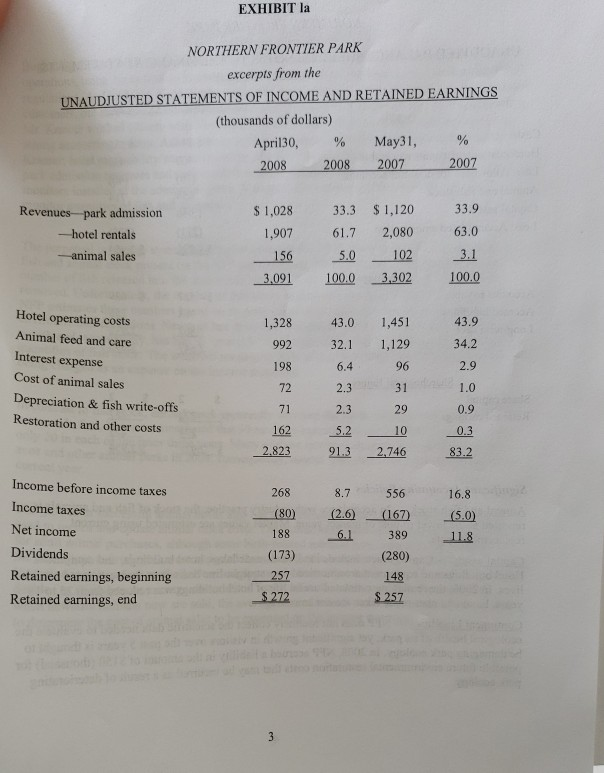
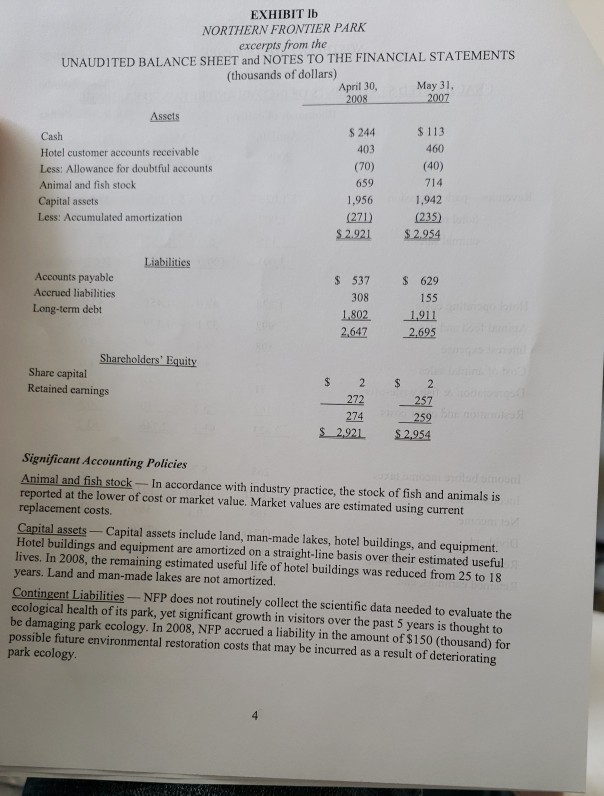
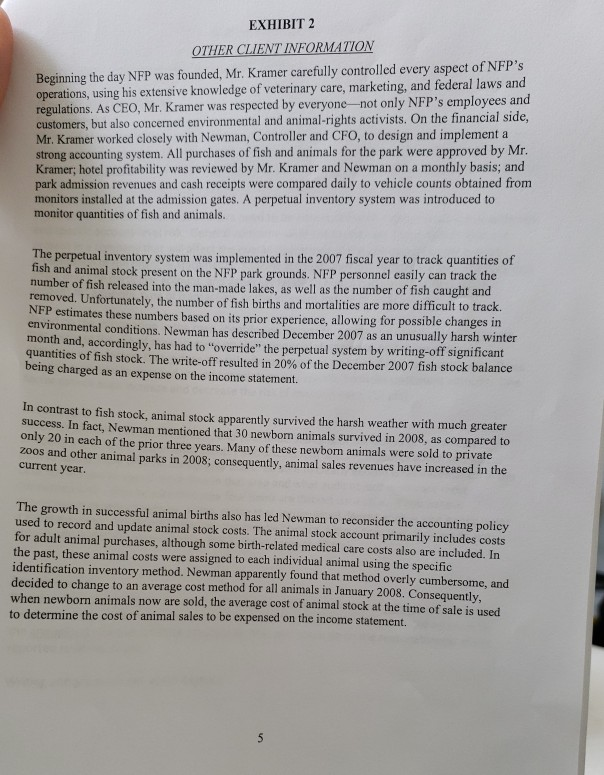
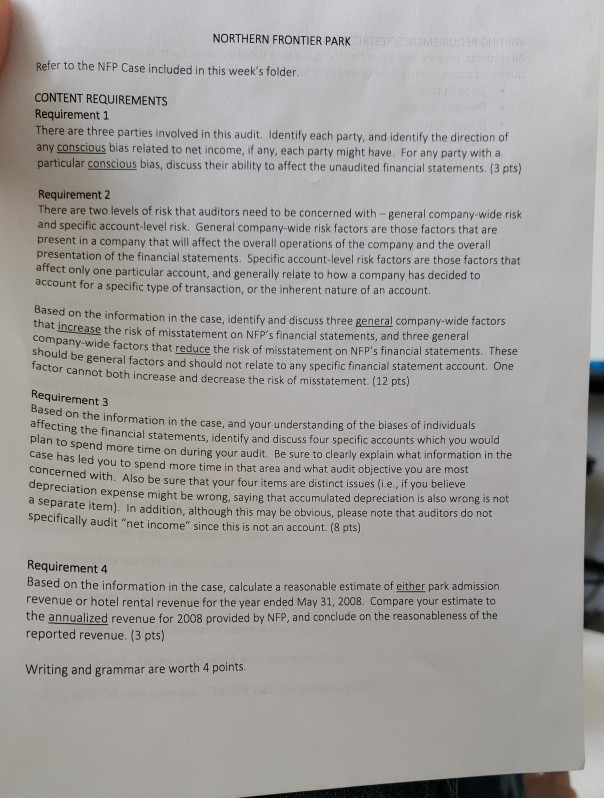
Please kindly help me with the solution to this problem Thanks
NORTHERN FRONTIER PARK Assume you are an audit senior employed by an international public accounting firm. On May 1, 2008, Ms. Benice, a partner in the firm, invites you to her office to discuss a special engagement that you will be supervising. To ensure the engagement runs smoothly, she has asked you to summarize-in a written planning memorandum all important risks and factors to be considered when conducting the engagement. The client for the special engagement is Northern Frontier Park (NFP), a privately-held company that operates a safari-style wildlife park in the northern U.S. Until late last year, NFP had been owned and managed by Mr. Kramer, founder and Chief Executive Officer (CEO) Upon Mr. Kramer's death in 2007, all shares in the company were distributed to his family. Because no one in Mr. Kramer's family wants to take over the business, the family will sell 100% and Chief Financial Officer (C of the NFP shares at the end of the current fiscal ycar to Newman, the current controller FO) of NFP. Because NFP is a private company, a market price for the shares is not readily available. Instead, the purchase/sale price will be based on a multiple of the income earned from "continuing operations" in the year ended May 31, 2008, calculated using U.S. GAAP. To ensure NFP's reported net income is appropriate, the Kramer family has engaged your firm to provide assurance that the year-end financial statements are reliable and are representative of on-going operations. In past years, NFP's financial statements always have been prepared by the CFO without audit or review. Similar to wildlife safari parks in Africa, visitors drive through NFP's 3200-acre park, which is home to over 100 species of native animals, birds, and fish. Although hunting is not allowed in the park, fishing is permitted from man-made lakes that NFP constructed and began stocking with fish two years ago. The NFP park has become a popular year-round tourist of vehicle admissions increasing from 40,000 in 2000 when the park attraction, with the number opened to over 55,000 in the 2007 fiscal year, Most of NFP's revenues are earned through park admission and hotel accommodation fees. Each vehicle admitted to the park is charged a $20 entrance fee, and approximately one-third of all park visitors stay in NFP's 85-room hotel. With an average nightly rate of $110, hotel occupancy rates typically average 60% each year. Most purchases and payments relate to animal and fish acquisition, feeding, and medical care, as well as to hotel administration and operations. To assist you in preparing the planning memorandum, Ms. Benice has provided you with i taeenspropared by the CFO CEsahibit ) andother rleant cliant information (Exhibit 2). Upon reviewing this information, you recognize that because today's date (May 1) precedes NFP's year-end (May 31), only 11 months of operations are included presently in NFP's income statement. Ms. Benice's discussions with the CFO indicate that although the balances on the 12-month income statement will be larger, their relative percentage of revenues (as shown) are unlikely to change. EXHIBIT la NORTHERN FRONTIER PARK excerpts from the UNAUDJUSTED STATEMENTS OF INCOME AND RETAINEDE ARNNGS (thousands of dollars) April30, % May31, 2008 2008 2007 $ 1,028 33.3 1,120 33.9 1,907 61.7 2,080 63.0 156 5.0 102 3.1 3,091 100.0 3.302 100.0 Revenues- park admission -hotel rentals animal sales Hotel operating costs Animal feed and care Interest expense Cost of animal sales Depreciation & fish write-offs Restoration and other costs 1,328 43.0 1,451 43.9 992 32.1 1,129 96 2.3 31 71 2.3 29 198 6.4 2.9 72 0.9 162 2 10 0.3 2.823 21.3 2.746 832 Income before income taxes Income taxes Net income Dividends Retained earnings, beginning Retained earnings, end 268 556 16.8 (80)2.6 (167 (5.0 188 61 389 118 (173) (280) 148 EXHIBIT lb NORTHERN FRONTIER PARK excerpts from the UNAUDITED BALANCE SHEET and NOTES TO THE FINANCIAL STATEMENTS (thousands of dollars) May 31, April 30, 2008 -- Asscts 244 113 Cash Hotel customer accounts receivable Less: Allowance for doubtful accounts Animal and fish stock Capital assets Less: Accumulated amortization 460 (40) 714 1,942 (27) (235) $2.921 $2.954 403 (70) 659 1,956 Liabilities Accounts payable Accrued liabilities Long-term debt s 537 S 629 155 1802 1.911 308 2.647 2.695 Share capital Retained camings 274 259 $ 2,921 2,954 Significant Accounting Policies Animal and fish stock-In accordance with industry practice, the stock of fish and animals is reported at the lower of cost or market value. Market values are estimated using current replacement costs. Capital assets-Capital assets include land, man-made lakes, hotel buildings, and equipment. Hotel buildings and equipment are amortized on a straight-line basis over their estimated useful lives. In 2008, the remaining estimated useful life of hotel buildings was reduced from 25 to 18 years. Land and man-made lakes are not amortized Contingent Liabilities-NFP does not routinely collect the scientific data needed to evaluate the ecological health of its park, yet significant growth in visitors over the past 5 years is thought to be damaging park ecology. In 2008, NFP accrued a liability in the amount of $150 (thousand) for possible future environmental restoration costs that may be incurred as a result of deteriorating park ecology EXHIBIT2 ER Beginning the day NFP was founded, Mr. Kramer carefully controlled every aspect of NFP's operations, using his extensive knowledge of veterinary care, marketing, and federal laws and regulations. As CEO, Mr. Kramer was respected by everyone-no customers, Mr. Kramer worked closely with Newman, Controller and CFO, to design and implement a t only NFP's employees and but also concerned environmental and animal-rights activists. On the financial side, trong accounting system. All purchases of fish and animals for the park were approved by Mr Kramer; hotel profitability was reviewed by Mr. Kramer and Newman on a monthly basis; and park admission revenues and cash receipts were compared daily to vehicle counts obtained from monitors installed at the admission gates. A perpetual inventory system was introduced to monitor quantities of fish and animals The perpetual inventory system was implemented in the 2007 fiscal year to track quantities of fish and animal stock present on the NFP park grounds. NFP personnel casily can track the number of fish released into the man-made lakes removed. Unfortunately, the NFP estimates these numbers based on its prior experience, allowing for possible changes in environmental conditions. Newman has described December , as well as the number of fish caught and number of fish births and mortalities are more difficult to track. 2007 as an unusually harsh winter month and, accordingly, has had to "override" the perpetual system by writing-off significant quantities of fish stock. The write-off resulted in 20% of the December 2007 fish stock balance being charged as an expense on the income statement. In contrast to fish stock, animal stock apparently survived the harsh weather with much greater success. In fact, Newman mentioned that 30 newborn animals survived in 2008, as compared to only 20 in cach of the prior three years. Many of these newborn animals were sold to private 2oos and other animal parks in 2008; consequently, animal sales revenues have increased in the current year The growth in successful animal births also has led Newman to reconsider the accounting policy used to record and update animal stock costs. The animal stock account primarily includes costs for adult animal purchases, although some birth-related medical care costs also are included. In the past, these animal costs were assigned to each individual animal using the specific identification inventory method. Newman apparently found that method overly cumbersome, and decided to change to an average cost method for all animals in January 2008. Consequently when newborn animals now are sold, the average cost of animal stock at the time of sale is used to determine the cost of animal sales to be expensed on the income stater ment. NORTHERN FRONTIER PARK Refer to the NFP Case included in this week's folder CONTENT REQUIREMENTS Requirement 1 There are three parties invol any conscious bias related to net income, if any, each party might have. For any party with a particular conscious bias, discuss their ability to affect the unaudited financial statements. (3 pts) ved in this audit. Identify each party, and identify the direction of Requirement 2 There are two levels of risk that auditors need to be concerned with -general company-wide risk and specific account-level risk. General company-wide risk factors are those factors that are present in a company that will affect the overall operations of the company and the overall presentation of the financial statements. Specific account-level risk factors are those factors that affect only one particular account, and generally relate to how a company has decided to account for a specific type of transaction, or the inherent nature of an account. information in the case, identify and discuss three general company-wide factors e the risk of misstatement on NFP's financial statements, and three general general factors and should not relate to Based on the that risk of misstatement on NFP's financial statements. These any specific financial statement account. One mpany-wide factors that reduce the should be actor cannot both increase and decrease the risk of misstatement. (12 pts) Requirement 3 Based on the information in the case, and your understanding of the biases of individuals inancial statements, identify and discuss four specific accounts which you would more cting the f plan case has led you to spend more time in that area and what audit objective you are concerned with. Also be sure that your four items are distinct issues (i.e, if you believe to spend time on during your audit. Be sure to clearly explain what information in the depreciation expense a separate item). might be wrong, saying that accumulated depreciation is also wrong is not In addition, although this may be obvious, please note that auditors do not specifically audit "net income" since this is not an account. (8 pts) Requirement 4 Based on the information in the case, calculate a reasonable estimate of either park admission revenue or hotel rental revenue for the year ended May 31, 2008. Compare your estimate to the annualized revenue for 2008 provided by NFP, and conclude on the reasonableness of the reported revenue. (3 pts) Writing and grammar are worth 4 pointsStep by Step Solution
There are 3 Steps involved in it
Step: 1

Get Instant Access to Expert-Tailored Solutions
See step-by-step solutions with expert insights and AI powered tools for academic success
Step: 2

Step: 3

Ace Your Homework with AI
Get the answers you need in no time with our AI-driven, step-by-step assistance
Get Started


